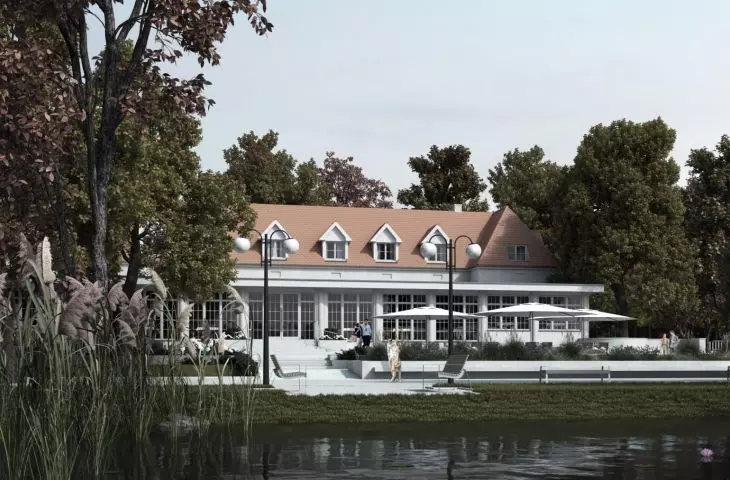A new incarnation of a Poznan landmark with an interesting and not-so-obvious history is almost ready. The former pavilion from an exhibition celebrating German achievements in eastern Prussia will reopen in Solacki Park as a restaurant and hotel. While referencing history, the project also retains the modifications made in the 1990s.
There are still two buildings in Poznań that first served as pavilions or exhibits during the East German Exhibition in 1911, and were later moved and adapted in another location. The first is a spacious winery and restaurant that served visitors, and has stood in Solacki Park for 110 years and is currently undergoing another renovation and reconstruction. The second is a wooden evangelical church that was part of a model German settlement village presented at the Exhibition. Relocated to Krzesiny near Poznań (now within the city limits), it still serves today - as a Catholic temple.
relocation and modifications
The restaurant has undergone numerous metamorphoses. In 1912 it was set up in Sołacz - in a new luxury villa district established according to an urban design by Joseph Stuebben. The pavilion was located by the ponds in the park that was the center of the planned urban establishment (period view: here). It served as a place for recreation, concerts and leisure. First, before the war, it was in its original form, with an entrance highlighted by two towers and a semicircular type of extensive dormer. After the war, the form was simplified: the towers were removed and the building lost its distinctive feature typical of the recreational and udrzhavikov pavilions of the early 20th century. The Building was home to the Rest Restaurant, and later, after extensive reconstruction, the Pirate Restaurant.
In 1992 the building underwent another metamorphosis by a private tenant - according to the design of Piotr Wędrychowicz. Respecting the original form, the architect expanded it, raised the roof, replastered it with dormers and made room for hotel rooms on the upper floor. He also added a new entrance on the south side of the restaurant, which took the name Meridian. The exclusive tabernacle was equipped with modern - for the early 1990s - fixtures and amenities. In the mid-decades of this century, the restaurant began to decline and was closed. It was eventually handed over to the Poznan International Fair, which for some time has been more concerned with investing in renovations of existing or new buildings. The design for the subsequent adaptation was done by the studio of EV Architects Ewelina Jankowska of Poznań.
a mix of different eras
Port Sołacz - visualization of the front part
design by EV Architects
How will the former Meridian, which has now taken the name Port Sołacz, look this time? From the outside, the changes are moderate. The massing will retain the gabbiness of the 1992 redevelopment, but will regain the character of the facade similar to the original design from the early 20th century.
We are only removing a few elements of the corner entrance strongly embedded in the style of the 1990s, while we are keeping the less distinctive extension and obscuring it even more strongly with greenery. We are finishing the walls at the entrance with fiber-cement panels," says Ewelina Jankowska. - We also enlarged the windows of the wooden part of the orangery facing the terrace - they now reach all the way to the floor and, referring to the original design, have strongly emphasized muntins that restore plasticity to the facade. We are revaluing the entire terrace, and in front of it we are planning a contemporary element - a seat in the form of a concrete bench.
Port Sołacz - restaurant interior, visualizations
by EV Architects
Thorough changes are going through the interior. After remodeling and adaptations, almost nothing of the original exhibition structure has survived. So the designer opted for a bright simple interior with wooden elements associated with the typical architecture of resorts and resorts of a century ago. - Besides, the whole interior is basically created from scratch," says Jankowska. She adds that the attic remains a hotel function with ten rooms in the same style as the restaurant.
We will also green up the parking area at the back. A group of trees will be planted in the middle, creating a kind of friendly courtyard with the parking function preserved. Ultimately, garages will also disappear from the back area.
Poznan citizens and tourists will be able to use the revived historic building as early as this spring.










































